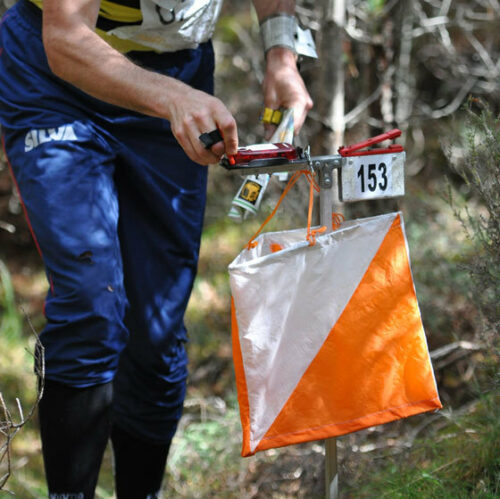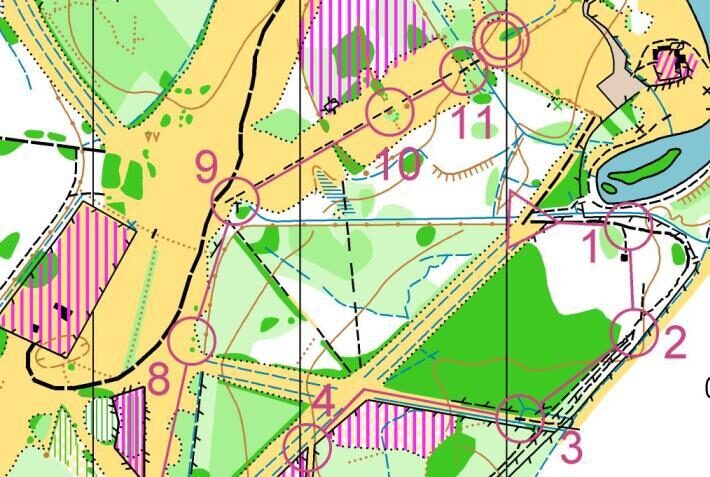New to Orienteering?
- Home >
- Information >
- Go Orienteering >
- New to Orienteering?
Orienteering is an exciting outdoor adventure sport which involves walking or running whilst navigating around a course using a detailed map and sometimes a compass.
The aim is to navigate in sequence between a set of control points and decide the best route to complete the course in the quickest time. It does not matter how young, old or fit you are, as you can run, walk or jog the course and progress at your own pace.
You take part individually, and you don’t get to see the map with the course on it until the race starts, so you can’t plan your route or check out where the controls are in advance. The fastest person to visit all the controls in the right order is the winner.
What's special about the map?
It has only information needed to navigate on it. The scale is usually 1:10,000 (1cm = 100m). Woodland is shown as white (if it's "runnable") through to dark green ("fight"), open areas in yellow, land form features such as contours in brown, man-made features such as tracks in black, and water features in blue. The course from Start (the triangle) to Finish (double circle) is printed in purple.
How do I know how hard the courses are?
Most races offer a range of courses with varying degrees of navigational difficulty, so there’s something to suit all ages and levels of experience. The easier courses stick to paths, while the harder ones require more complex navigation and advanced map reading skills. How the courses are graded will vary from race to race, so it's best to ask one of the race volunteers, who'll be happy to recommend a course for you to try.
Don’t you get lost all the time?
Everyone gets lost sometimes, but you work out where you are sooner or later! It can be disheartening, but as you become more experienced and your navigational skills increase, you'll spend less time making mistakes.
It’s very unusual for the top competitors to get lost for any significant length of time, and when every second can make the difference between winning a medal and not, they generally consider even a few seconds’ hesitation to be time wasted.
Doesn’t everyone just follow each other?
All the runners on the same course will start a minute or two apart to prevent everyone from following the person in front. Sometimes people catch each other up, but it’s never a good idea to blindly follow someone in case they make a mistake or they’re not looking for the same control as you.
How do you know when you’ve got to the right place?
Each control is marked by a small orange and white marker, and has a unique code you can check to make sure you’ve found the right one.
Can’t you just cheat and say you’ve been to all the controls?
Everyone carries an electronic chip that they register at each control to prove they’ve been there. When you finish, you get a printout of how long you took between each control, meaning you can compare with other people and see where you lost time.
Where do you do it?
Anywhere! Big races in the UK in the past year have taken place in locations ranging from the streets of Central London and Edinburgh to remote mountainsides in the Scottish Highlands and the Lake District. Races take place across the country every weekend, with common venues including forests, moorland, town centres, parks, and university campuses.
Do you need loads of expensive kit?
You’ll need running clothes and trainers, including long running trousers if the race is in the countryside. If you are going to walk, come suitably dressed for a country walk at the time of year. A compass is very useful, particularly on the more difficult courses, but you’re not allowed to use a GPS or the map on your phone to help you! Some races might require you to carry a whistle for safety. You can cheaply hire the electronic timing chips at each race, and your entry fee will include your own copy of the race map.
Sounds great! How can I give it a go?
The best place to get started is at a local event. At most events you can just turn up and have a go. There will be someone at registration who will help guide you as what to do. When you get to the Start the adventure begins.


